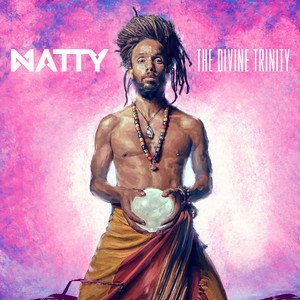World Music ⁞ New Releases⁞ Artist Interviews⁞ Music News
Introduction of World Music
World music is a musical genre that encompasses a wide range of musical styles and traditions from around the world. It includes music from a variety of cultural and geographic regions, including Africa, Asia, the Middle East, Europe, Latin America, and the Caribbean. World music often incorporates elements of traditional and folk music, as well as popular and contemporary styles. It is often characterized by the use of traditional instruments, unique rhythms and melodies, and the incorporation of cultural themes and stories into the music. World music can also be fusion music that combines elements of different musical traditions to create a new, unique sound. The term “world music” was coined in the 1980s as a way to categorize and market music from non-Western cultures to a global audience.
World Music Playlist by Nagamag
World Music Video Selections by Nagamag
Recent World Music Interviews
Olivero Interview on Nagamag
.
Nagamag:
Which are the genres that describe your music style better?
Olivero:
World music, Flamenco, Latin, Jazz
Nagamag:
Few words about your musical background and career?
Olivero:
Professional music classes since early childhhod , multi-instrumentalist (cello, drums/percussion, flamenco guitar, electric guitar)
-Main instrument flamenco guitar
- live shows with orchestras , solo cello, Rock-bands, jazz ensembles
-now starting to plan live shows with flamenco music ,
Nagamag:
Do you remember your first connection of love to music that was the right impact to be a music artist now?
Olivero:
Paco de lucias music (age of 17)
Meetings and concerts of john mclaughlin
Nagamag:
Many artists listen to genres that they are not producing music for. Which track is your favorite that is NOT similar to yours?
Olivero:
Led Zeppelin "Dazed and Confused"
Nagamag:
Of Course Nagamag would love to listen also which is the track from a similar artist you admire?
Olivero:
Paco de Lucia "Monasterio de Sal"
Con Piliouras Interview on Nagamag
.
Nagamag:
What are the genres that describe better your music style?
Con Piliouras:
Greek folk music, Rebetika, Jazz and World Music
Nagamag:
Few words about your musical background and career?
Con Piliouras:
I write music in a variety of different styles, this is because I have a vast taste of musical influences.
My current focus as a composer is to continue developing my World Music project, which is a fusion of Greek, Jazz and other world music influences.
I am also passionate about playing the Guitar, and I thoroughly enjoy performing Jazz.
Nagamag:
Do you remember your first connection of love to music that was the right impact to be a music artist now?
Con Piliouras:
My first connection to music was at the age of 4. I grow up listening to tradition Greek folk music and I was always mesmerised by the amazing melodies.
The love for music further developed with the exposure of Rock music and then later Jazz.
This was all presented to me by my Mother and Brother.
Nagamag:
Most artists have a favorite song from a different music genre than the one they are producing music for... Which is yours?
Con Piliouras:
Chick Corea "Windows"
Nagamag:
Of Course Nagamag would love to listen also which track from a similar artist you admire?
Con Piliouras:
Manos Hadjidakis "Choros"
Latest World Music discoveries
Highlight Review: “Sta Anafiotika” by Andreas Dermitzakis | A worth listening World Music Release
Η υπέροχη αυτή μελωδία σε ταξιδεύει πίσω στο χρόνο και σου ξυπνά νοσταλγικά συναισθήματα και σκέψεις. Τα απίστευτα φωνητικά ρ... >>> Read full review & listen to the song on Nagamag #worldmusic #nagamag #musicmagazine #musicreview #review
To The Yes – Mup The Edens
Ωραία και κεφάτη μελωδία που σου φτιάχνει τη διάθεση από την πρώτη στιγμή. Ένα υπέροχο πάρτι έχει στηθεί και όλοι χαμογελαστο... >>> Read full review & listen to the song on Nagamag #alternative #indiernb #nujazz #jazztronica #jazz #muptheedens #unitedstates #nagamag #musicmagazine #musicreview #review
Move Like Water – Natty
-Natty-в очередной раз показал, что его способность соединять традиционные классические элементы Neo-Soul с Hip-Hop звучанием... >>> Read full review & listen to the song on Nagamag #neosoul #hiphop #conscioushiphop #natty #jamaica #nagamag #musicmagazine #musicreview #review
Fantasia – Penelope Spy
Эта композиция предоставляет возможность расслабиться и насладиться моментом, подпитывая позитивные эмоции и излучая солнечно... >>> Read full review & listen to the song on Nagamag #bossanova #nagamag #musicmagazine #musicreview #review
Bob Marley Song – Lovetape
Catches you right away, from the first notes. Nice instrumentation, especially because the song is kinda tribute to legendary... >>> Read full review & listen to the song on Nagamag #alternativerock #reggae #lovetape #unitedstates #nagamag #musicmagazine #musicreview #review
Kyrie (Traditional) – Mykalle
Cinematic structure gives this song different sound dimension, more depth and emotion to the already beautiful vocal themes. ... >>> Read full review & listen to the song on Nagamag #cinematic #ambient #nagamag #musicmagazine #musicreview #review
” Ocean Moon” (Live at Sugarshack Sessions – Reggae Rise Up FL) – Roots of Creation x Matisyahu x Sugarshack Sessions
Όμορφη και δυναμική μελωδία που ανεβάζει την αδρεναλίνη ενώ παράλληλα έχει μια ξέγνοιαστη διάθεση. Τα ιδιαίτερα φωνητικά με τ... >>> Read full review & listen to the song on Nagamag #altpop #rootsofcreationxmatisyahuxsugarshacksessions #rootsofcreationxmatisyahuxsugarshacksessions #unitedstates #nagamag #musicmagazine #musicreview #review
Shivani Day – Rhetoric | World music review
Dreamy atmosphere and amazing layering of sounds, that creates very eastern vibe within the song. Beautiful instrumentation j... >>> Read full review & listen to the song on Nagamag #alternative #indiernb #shivaniday #unitedkingdom #nagamag #musicmagazine #musicreview #review
Ben Barbic x Bennie Mellies – Best Friend | World Music music review
Great mixture of styles bonded together in a wonderful way, from hip hop elements, reggae as the basic structure to some subt... >>> Read full review & listen to the song on Nagamag #hiphop #conscioushiphop #reggae #benbarbicxbenniemellies #benbarbicxbenniemellies #unitedstates #netherlands #nagamag #musicmagazine #musicreview #review
Some World subgenres
There are many subgenres of world music, as the term encompasses a wide range of musical styles and traditions from around the globe. Some examples of subgenres of world music include:
African music: This includes music from various countries in Africa, such as Ghana, Senegal, and South Africa. It often features traditional instruments such as drums, percussion, and stringed instruments, and may incorporate elements of traditional dance and storytelling.
Reggae: This is a genre of music that originated in Jamaica and is characterized by a distinctive rhythmic style and lyrics that often focus on themes of social justice and political resistance.
Salsa: This is a dance-oriented style of music that originated in the Caribbean, particularly in Cuba and Puerto Rico. It is characterized by its fast-paced rhythms and lively melodies, and often incorporates elements of jazz and Latin American music.
Bhangra: This is a genre of music that originated in the Punjab region of India and Pakistan and is characterized by its energetic beats and lively melodies. It is often associated with celebrations and festivals.
Flamenco: This is a genre of music and dance that originated in Spain and is characterized by its passionate and emotional style. It often incorporates elements of Arabic and Gypsy music and features instruments such as the guitar and cajón (a Peruvian percussion instrument).
Cumbia: This is a genre of music that originated in Colombia and is characterized by its upbeat rhythms and catchy melodies. It often incorporates elements of African and indigenous music and is popular throughout Latin America.
Arabic music: This includes music from various countries in the Middle East and North Africa, such as Egypt, Morocco, and Lebanon. It often features intricate melodies and rhythms, and may incorporate elements of traditional dance and storytelling.
Klezmer: This is a genre of music that originated in the Ashkenazi Jewish communities of Eastern Europe and is characterized by its lively, upbeat melodies and improvisational style. It often incorporates elements of Gypsy music and features instruments such as the clarinet and violin.
Tango: This is a genre of music and dance that originated in Argentina and is characterized by its sensual and intimate style. It often incorporates elements of European and African music and features instruments such as the bandoneón (a type of accordion) and guitar.
Zouk: This is a genre of music that originated in the Caribbean, particularly in Haiti and the French Antilles, and is characterized by its fast-paced rhythms and catchy melodies. It often incorporates elements of reggae, salsa, and other Latin American music styles.
Samba: This is a genre of music and dance that originated in Brazil and is characterized by its lively rhythms and catchy melodies. It is often associated with carnivals and celebrations, and features instruments such as the drums and percussion.
Fado: This is a genre of music that originated in Portugal and is characterized by its melancholy and emotional style. It often incorporates elements of traditional Portuguese music and features instruments such as the guitar and mandolin.
This is just a small sampling of the many subgenres of world music, as there are countless other styles and traditions from around the globe that could also be considered part of this genre.
The most used instruments in World Music
There are many instruments that are commonly used in world music, as the genre encompasses a wide range of musical styles and traditions from around the globe. Some of the most common instruments used in world music include:
Drums and percussion: Drums and percussion instruments are a common feature in many types of world music, as they provide the rhythmic foundation for the music. Some examples of percussion instruments used in world music include the djembe (a West African drum), bongos (a pair of small hand drums), and congas (a type of tall, narrow drum).
Stringed instruments: Stringed instruments such as the guitar, violin, and lute are commonly used in world music. In some styles of music, such as Arabic and Indian music, stringed instruments are often played in a distinctive, microtonal style that involves playing quarter tones or other intervals not found in Western music.
Wind instruments: Wind instruments such as the flute, clarinet, and saxophone are commonly used in world music. In some styles of music, such as Chinese and Japanese music, traditional wind instruments such as the shakuhachi (a Japanese bamboo flute) and dizi (a Chinese bamboo flute) are used.
Keyboard instruments: Keyboard instruments such as the piano and organ are also commonly used in world music. In some styles of music, such as reggae and salsa, electronic keyboard instruments are often used to provide a driving, rhythmic foundation for the music.
Traditional instruments: Many types of world music also incorporate traditional instruments that are specific to a particular cultural or geographic region. For example, the kora (a West African harp-lute) is commonly used in African music, while the sitar (a stringed instrument with a distinctive twangy sound) is a key instrument in Indian music.
Vocals: Vocals are commonly used in world music, as the genre encompasses a wide range of musical styles and traditions from around the globe. In many styles of world music, vocals are an important part of the music and are used to convey emotions, tell stories, or communicate political or social messages.
In some styles of world music, vocals are accompanied by instrumental accompaniment, while in other styles, vocals may be the only instrument used. In some styles of world music, vocals are also used to create complex harmonies or to imitate the sound of traditional instruments.
Some examples of styles of world music that feature vocals include:
African music: Many styles of African music feature vocals as an important part of the music. In some styles, vocals are used to tell stories, convey emotions, or communicate political or social messages.
Reggae: Reggae music often features vocals as an important part of the music, and the lyrics of reggae songs often address themes of social justice and political resistance.
Bhangra: Bhangra music often features vocals as an important part of the music, and the lyrics of bhangra songs often address themes of love, celebration, and cultural pride.
Flamenco: Flamenco music often features vocals as an important part of the music, and the lyrics of flamenco songs often address themes of love, passion, and heartbreak.
Arabic music: Many styles of Arabic music feature vocals as an important part of the music, and the lyrics of Arabic songs often address themes of love, cultural pride, and social and political issues.
Lyrics in world music often convey cultural, social, or political themes and messages. They can be used to tell stories, express emotions, or communicate messages about important issues. In many styles of world music, lyrics are an important part of the music and can be used to convey the cultural and artistic values of a particular community or society.
In some styles of world music, lyrics may be sung in the local language of the community or region where the music originates. In other styles, lyrics may be sung in a more universal language, such as English, in order to appeal to a wider audience.
Some examples of themes and messages that may be conveyed through the lyrics in world music include:
Social justice: Many styles of world music address themes of social justice and political resistance in their lyrics. For example, reggae music often addresses themes of social and political injustice, while protest songs in various styles of world music may address issues such as civil rights and human rights.
Love and relationships: Love and relationships are a common theme in the lyrics of world music. In some styles, such as flamenco and Arabic music, the lyrics may focus on themes of love and heartbreak, while in other styles, such as bhangra and salsa, the lyrics may focus on themes of love and celebration.
Cultural pride: In some styles of world music, the lyrics may focus on themes of cultural pride and identity. For example, African music often incorporates lyrics that celebrate the cultural heritage and traditions of the community or region where the music originates.
Personal growth and self-discovery: Many styles of world music also address themes of personal growth and self-discovery in their lyrics. For example, lyrics in some styles of world music may explore themes of spiritual growth, self-acceptance, or finding one’s place in the world.
This is just a small sampling of the many instruments that are commonly used in world music, as the genre encompasses a wide range of musical styles and traditions from around the globe.











